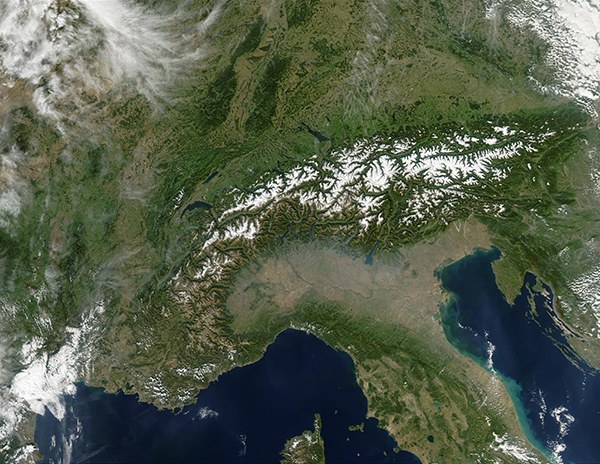Macroregional Strategy

As a mountain chain at the heart of Europe, the Alps are strongly impacted by the policies of the European Union. The EU strategy for the Alpine Region (EUSALP) is to strengthen future cooperation between the Alps and the surrounding cities and regions. CIPRA and its partners are calling for civil society to be involved in the process.
What is a macro-region?
Social, ecological and economic developments are no respecters of borders. They occupy a higher dimension as ill-defined cultural, economic and social spaces. That is the thinking behind the proposal for a macro-regional strategy of the European Union to help cross-border areas without clear political and administrative boundaries respond effectively to common challenges and opportunities. There is no universal definition of a macro-region, but four main criteria apply to the approach:
- Presence and perception of common interests
- Common identity
- Shared mode of cooperation
- Involvement of the EU
The Alpine region satisfies these criteria. From the point of view of the European Union, a macro-region should not involve any additional institutional, financial or legal requirements; the objective is to make use of existing instruments, funds and platforms for cooperation like the EU’s environment and cohesion policy, and national and international regimes. With the Baltic Sea Region Strategy (2009) and the Danube Region Strategy (2010), the first two European macro-regions have already been created.
The role of CIPRA
In the macro-region process, CIPRA is the advocate of a sustainable policy for the Alpine Region. A common European strategy is an opportunity to draw the attention of the whole of Europe to the issues and challenges confronting the Alpine region. It is also about shaping a general strategy for the future of the Alps.
We are the Alpine macro-region
A key element in a European strategy for the Alpine region is multilevel governance. CIPRA, with its over a hundred member organisations, is part of a large network that extends well beyond the Alps and is also rooted in the surrounding cities and regions. Together with other Alps-wide civil society networks, CIPRA nurtures a culture of cooperation and exchange, for example in and with the Alpine Convention. On the basis of their knowledge and long years of expertise, eight Alpine protection organisations have compiled a document listing their demands and proposals for a macro-region for the Alps. It also contains ideas about what the remit of a macro-region should be and how the strategy can be shaped to the benefit of all concerned.
> Common input paper (CIPRA, ISCAR, Alliance in the Alps, Club Arc Alpin, Alpine Town of the Year Association, WWF, proMONT-BLANC, IUCN)
Links
EUSALP - EU Strategy for the Alpine Region
Other Macro-Region Strategies
- EU Macro-Regional Strategies, www.interact-eu.net/macro_regional_strategies/macro_regional_strategies/283/3921
- Danube Region Strategy, www.danube-region.eu
- Baltic Sea Region Strategy, www.balticsea-region-strategy.eu



